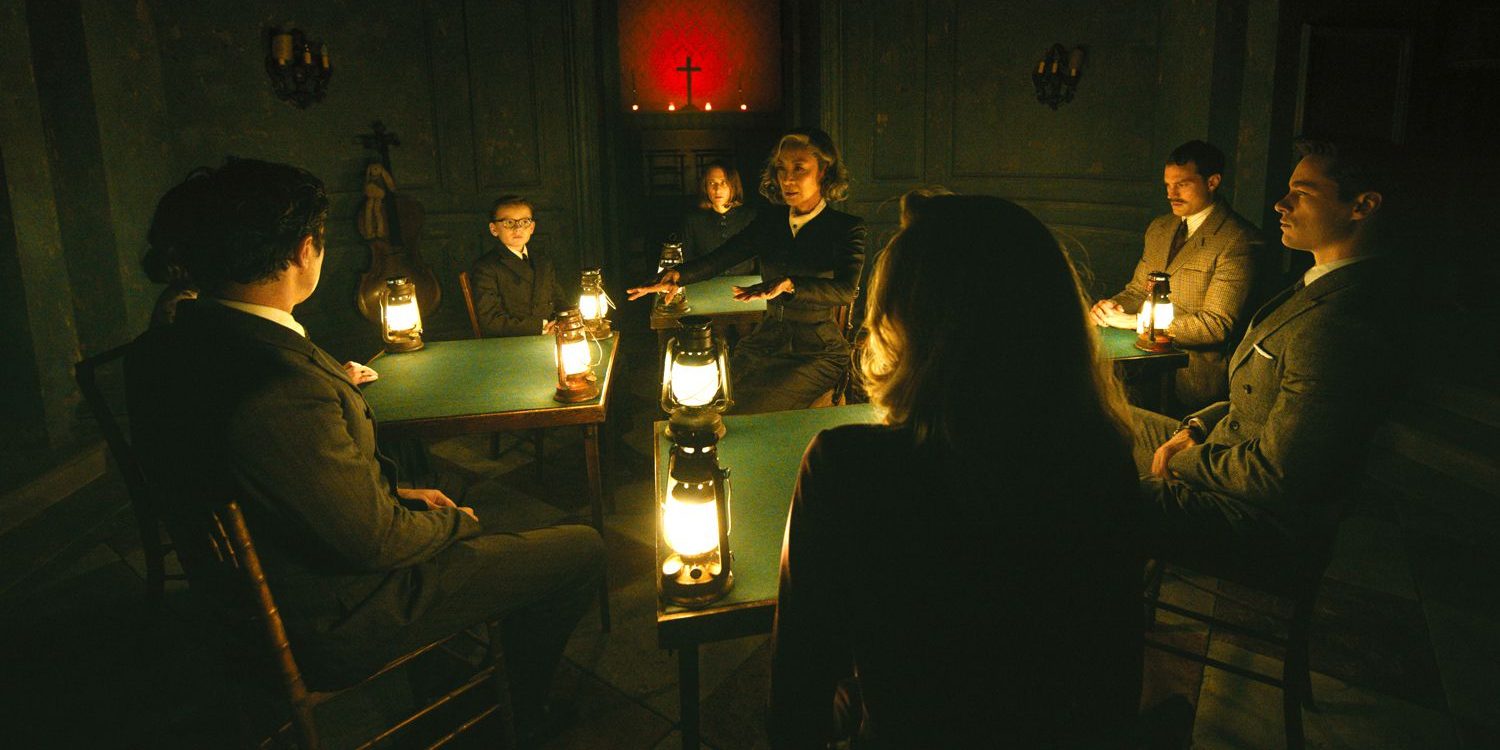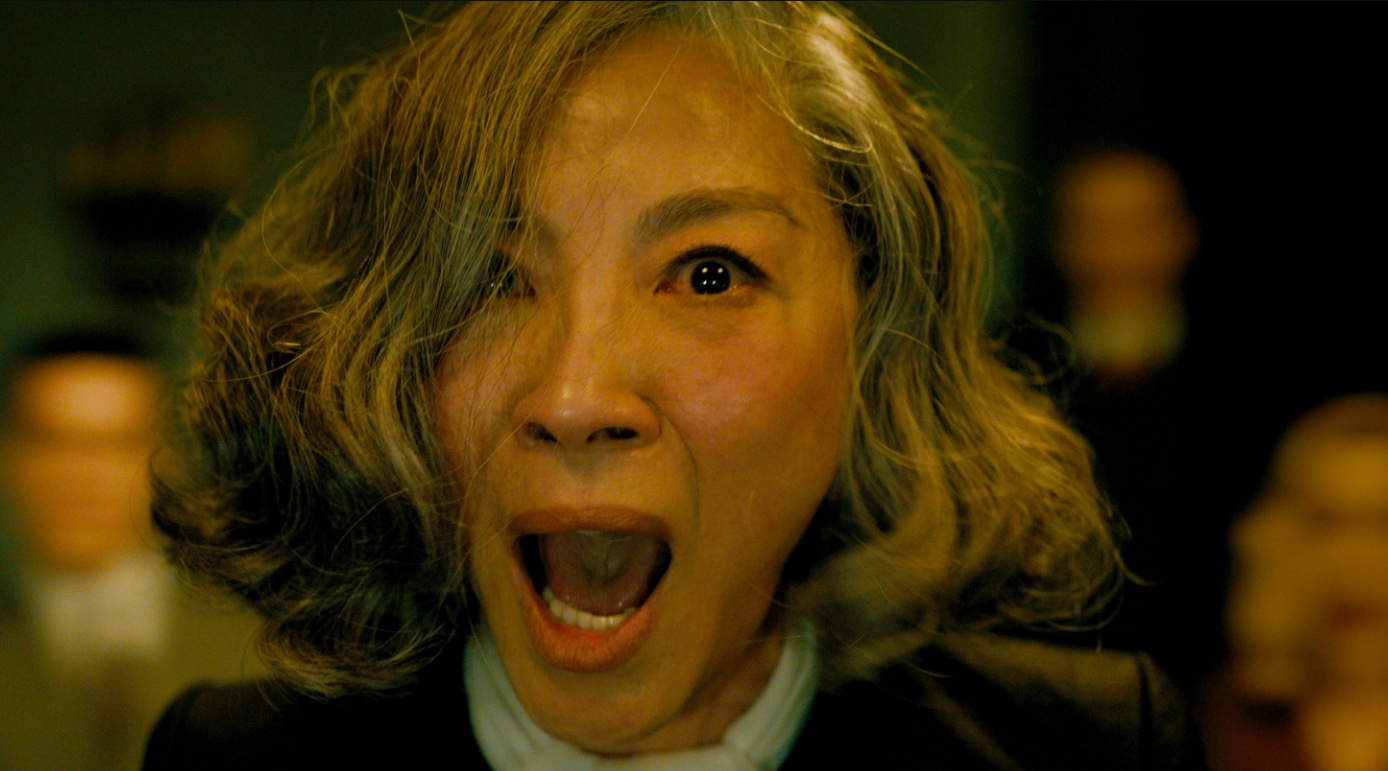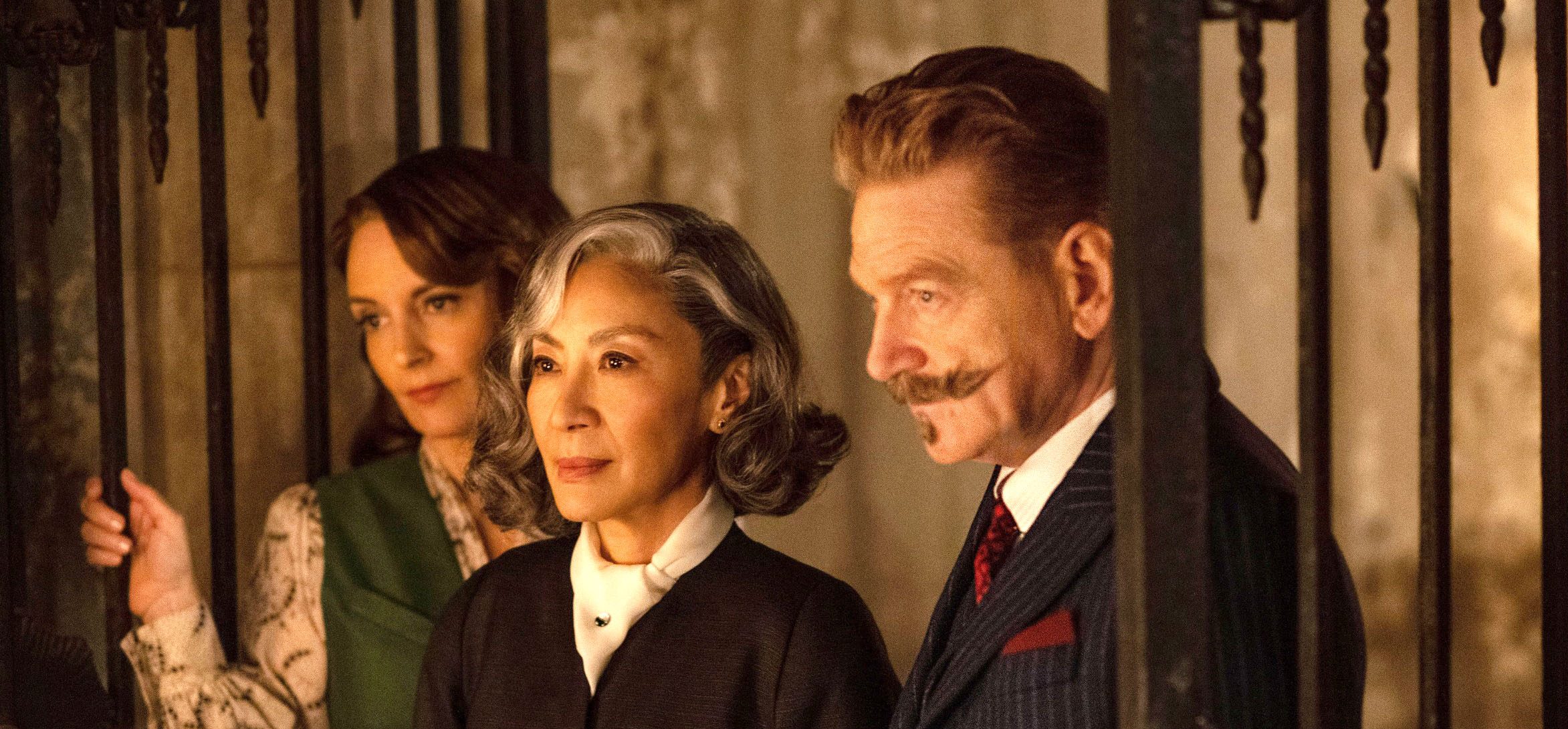Directed by Kenneth Branagh, ‘A Haunting in Venice’ brings a twist to the general tone of Hercule Poirot by adding supernatural elements into the mix. The film begins with a reluctant Poirot agreeing to visit a seance, where an infamous psychic medium, Joyce Reynolds, will contact the dead daughter of opera singer Rowena Drake, or so she claims. Poirot does not believe in the supernatural, and despite his friend’s repeated claims that Reynolds seems to be the real deal, he is not moved to change his stance. By the end of the movie, he presents a successful explanation for everything, but there are still a few things that cannot be explained, and this raises the question of Reynolds’ authenticity as a medium. SPOILERS AHEAD
All Evidence Points to Joyce Reynolds Being a Fake
Poirot is not the only one who doesn’t believe Joyce Reynolds. 11-year-old Leopold Ferrier is also entirely unconvinced of her powers and calls her a fake to her face. Still, when she sits for the seance, Reynolds says things she couldn’t have known. Earlier, she easily predicted the room that Rowena’s dead daughter, Alicia, lived in, and the moment she enters the room, she identifies Baba as the bear, Alicia’s favorite toy.

Later, Poirot explains it away by revealing that Reynolds was in league with his friend and author, Ariadne Oliver, and his bodyguard, Vitale Portfoglio. Because Portfoglio was the police officer on call when Alicia died, he had been to the house, which means he would have known the details about Alicia’s room being on the third floor and the name of her favorite toy. This collaboration also explains how Reynolds knew about Katherine. Ariadne must have told her the details to rattle Poirot.
But before this, Poirot gives irrefutable proof of Reynolds’ fakery by exposing her trick with the typewriter. It is placed at a distance from her, and words are typed on it without any intervention, making it look like the spirits or someone’s ghost is doing the typing. Poirot exposes it by revealing her secret assistant, Nicholas, who hides in the chimney, controlling the typewriter with a machine that allows him to type the words from a distance. Later, during the interviews, her other assistant, Desdemona, confesses that Reynolds was a fake through and through, and everything they did was a show they’d meticulously planned to fraud people. Her brother seems to think otherwise and believes Reynolds was magic. However, according to Desdemona, he was under Reynolds’ spell, who flirted with him to keep him in line.
The Possession Scene Raises Questions on Reynolds’ Fraudulence
Perhaps the only unexplainable thing about Reynolds is when, during the seance, she is possessed by Alicia’s spirit and speaks in her voice. It is clear why she fakes the possession and makes a show of it. Moments before, Poirot had exposed Nicholas and called her a fraud. The act was a desperate attempt for her to get Rowena to ask for another seance. Moreover, Reynolds didn’t know if Alicia was murdered. She and Ariadne had cooked it up to make things more dramatic, just like they had anonymously invited Alicia’s ex-fiancee, Maxime, to attend the seance to make things more interesting.

Sure enough, the talk of Alicia’s death being a murder captures everyone’s attention, and it does the job. But then, there’s the matter of the voice. Everyone who knew Alicia was in that room confirmed that they heard Reynolds talk in her voice. Because Reynolds had never met Alicia, and she could never have heard her voice, how would she know what Alicia sounded like? Neither Ariadne nor Portfoglio knew Alicia, so they couldn’t have told her how to imitate her voice.
But then, having faked so many seances and fooled so many people over the years, one can expect Reynolds to have experience with making voices of people. She knew a bit about Alicia, and after talking with her mother, she could have had the sense to modify her voice according to Rowena but give it the tenor of someone much younger. Even if she couldn’t accurately imitate it, she could always rely on the people to hear what they wanted. They were there to hear Alicia, so even if Reynolds made a cheap impression of her voice, Rowena and the others would still hear what they expected. They would hear Alicia. And that’s what happened. The only other explanation is that, perhaps, Reynolds did have some level of psychic powers, which showed up occasionally, while she usually relied on tricks. This time, Alicia showed up to demand justice and gave some legitimacy to the fraud Joyce Reynolds.
Read More: A Haunting in Venice: Is Palazzo Lacrime Dei Giovani a Real Place?


You must be logged in to post a comment.